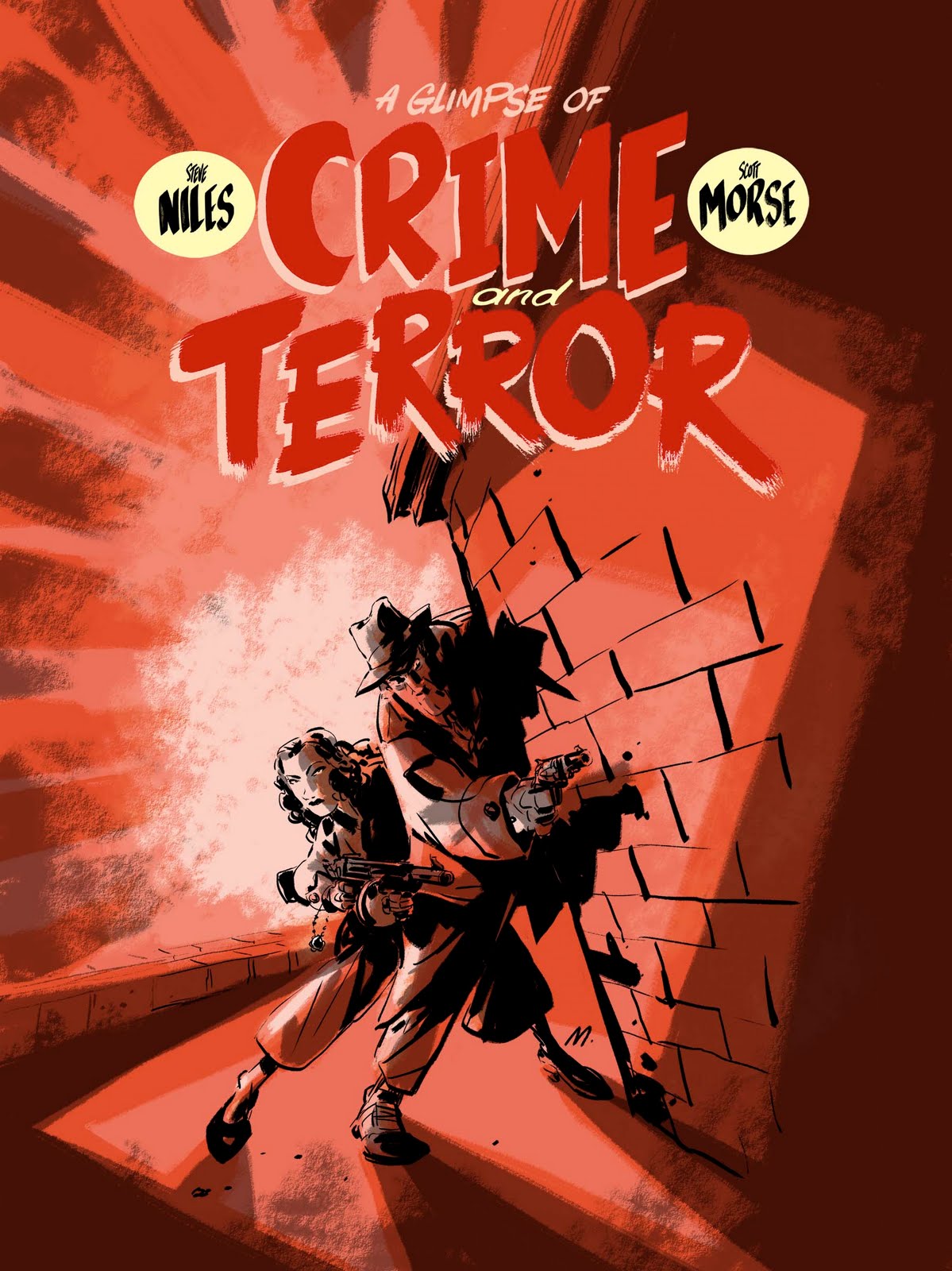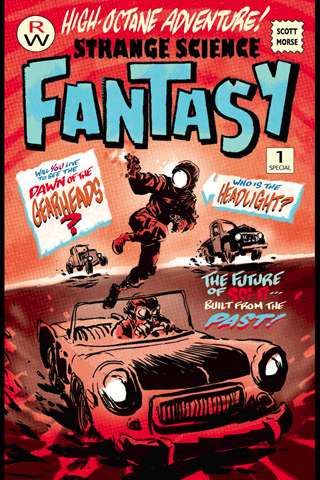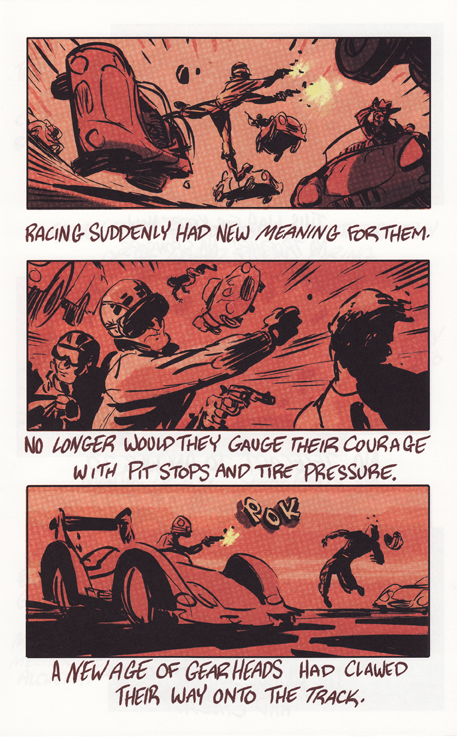A Glimpse of CRIME AND TERROR!
/
My favourite comic of 2010 was Scott Morse’s Strange Science Fantasy, a six-part miniseries published by IDW. Each issue of the series explored a different facet of pulpy B-movie sci-fi tropes—one dealt with hot rodders in a postapocalyptic future, another featured an amazing colossal soldier sent into space to battle invading cosmic gods…you get the idea. Morse, a Pixar animator in his day job, thrillingly channeled his love of big-idea SF into a form of cartoon storytelling that can only really be described as “pure comics”—not always totally linear or easy to explain, just a creator’s enthusiasm spilling out onto the page in fast & furious fashion. I found Morse’s enthusiasm infectious, and I suspect that enthusiasm will carry over into his new series, Crime And Terror, a new collaboration with writer Steve Niles (30 Days Of Night, Criminal Macabre).
Crime And Terror is said to be forthcoming in a series of original 80-page, self-published hardcovers, but I got my first taste in the form of a special limited edition preview book. This limited, signed edition is printed on cardboard pages with rounded edges in an oversized format, and features two short stories by Niles and Morse. The first, “The Bee’s Knees” follows a lovestruck duo of bank robbers on the run from the law, determined to live together forever—quite literally, it turns out, while the second, untitled story features an ever-shrinking group of survivors surrounded by an army of the living dead. Both of Niles’s stories have a similarly hard-boiled vibe, complete with first-person narration, brought to vivid life by Morse’s blocky, splashy artwork (someone once described his art as looking like a mix of Jack Kirby and Darwyn Cooke, high praise indeed).
I thought “The Bee’s Knees” worked a lot better than the second, but that could just be that I’m suffering from a bit of zombie overload these days (zombie comics, movies, and TV shows seem to be multiplying at a rate that makes their fictional counterparts look lazy!). The “crime and terror” promised by the title certainly can be found in the first story, but the second tale is pretty much just straight-ahead survival horror. Each revolves around a doomed romance, defiant in the face of overwhelming odds. Maybe this will be the thread that connects the future Crime And Terror stories? Based on this early taste, I’m definitely curious to find out.







